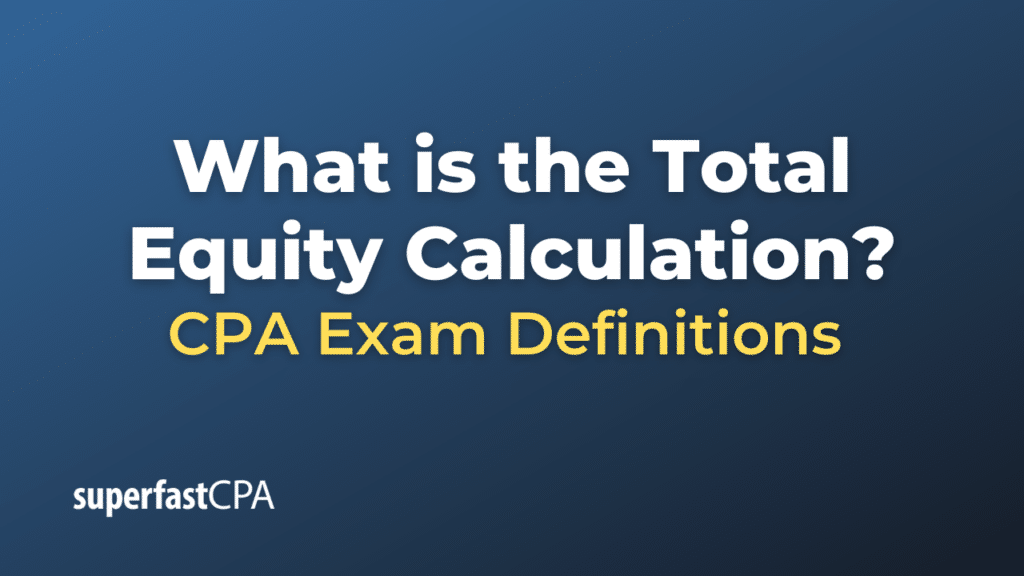Total Equity Calculation
Total equity represents the residual interest in the assets of a company after deducting liabilities. In other words, it’s the amount that belongs to the owners (shareholders) once all debts and obligations have been settled. Total equity is often referred to as shareholders’ equity, owners’ equity, or just equity.
The total equity calculation can be derived from one of the most fundamental equations in accounting:
Assets = Liabilities + Equity
From this equation, the calculation for total equity is:
Equity = Assets − Liabilities
Total equity typically consists of:
- Paid-in Capital or Share Capital: The amount shareholders have invested in the company. This can be in the form of common stock, preferred stock, or additional paid-in capital.
- Retained Earnings: Cumulative earnings of the company that haven’t been distributed to shareholders as dividends. This account increases with net income and decreases with net losses and a payments.
- Treasury Stock: Stock that the company has repurchased from shareholders. It represents a contra equity account, reducing total equity.
- Other Comprehensive Income: Accumulated gains and losses that aren’t recognized in the income statement. Examples include unrealized gains or losses on available-for-sale securities or foreign currency translation adjustments.
- Other Adjustments: These can include items such as minority interest or specific adjustments related to certain accounting standards.
The total equity of a company can be found on its balance sheet, typically under the equity section.
Example of the Total Equity Calculation
Let’s illustrate the concept of total equity with a hypothetical example.
Scenario: “OceanWave Surfboards Co.”
OceanWave Surfboards Co. is a company that manufactures and sells custom surfboards. Here’s a breakdown of their financial position as given on their balance sheet:
- Total Assets: $1,500,000
- Cash: $250,000
- Accounts Receivable: $100,000
- Inventory: $650,000
- Property, Plant, and Equipment: $500,000
- Total Liabilities: $800,000
- Accounts Payable: $300,000
- Short-term Loan: $200,000
- Long-term Debt: $300,000
To determine the total equity of OceanWave Surfboards Co., we’ll use the formula:
Equity = Assets − Liabilities
Calculation:
Equity = $1,500,000 (Assets) – $800,000 (Liabilities)
Equity = $700,000
Now, let’s break down this equity:
- Share Capital (Common Stock): $400,000
- Retained Earnings: $320,000
- Treasury Stock: -$20,000 (This reduces the equity because it represents stock the company has bought back.)
Total Equity: $700,000 (This matches our earlier calculation and can be further broken down into the components above.)
Interpretation:
OceanWave Surfboards Co. has a total equity of $700,000, meaning the owners have a claim of $700,000 on the company’s assets after all liabilities are paid off. This equity can be seen as the “net worth” of the company from a financial statement perspective. It’s a critical figure for investors as it shows how much value has been generated and retained within the company, as well as how much has been invested by shareholders.













